Going to Iceland? Here is a list of the most important must-see locations and top natural attractions Iceland has to offer for stunning landscape photography.
Iceland boasts some of the world's most beautiful and diverse landscapes: roaring waterfalls, cracking glaciers, epic mountains, black sand beaches, unreal basalt cliffs, iconic sea stacks, fiery volcanoes, fascinating geysers, otherworldly hot springs, and lava fields as far as the eye can see!
1. Reykjanestá and Valahnúkamöl: Atlantic Power on the Reykjanes Peninsula
Let's start with a hidden gem. It's often skipped because many tourists don't know about it—a huge mistake! Reykjanestá, the sea stacks at Valahnúkamöl, and the hot springs at Gunnuhver serve as a perfect introduction to Iceland's raw power. The sea stacks and the Atlantic Ocean's roaring waves create opportunities for beautiful long exposure photography as the water crashes against the cliffs.
Getting There: It's easily accessible by driving south from Keflavik International Airport via Road 44. Be aware that due to ongoing volcanic eruptions, you will likely have to return via the same road when driving towards Reykjavik. The area has plenty of parking, trails, and boardwalks, making navigation simple.
Best Time for Photography: This location works perfectly all year round, but the golden hour during the winter months and stormy days with big waves make it even more exciting for a landscape photographer!
Essential Gear:
- Tripod
- Neutral Density filter (ND-Filters)
- Wide-angle lens
Keep an eye on the weather with the Icelandic Weather Service by clicking here.
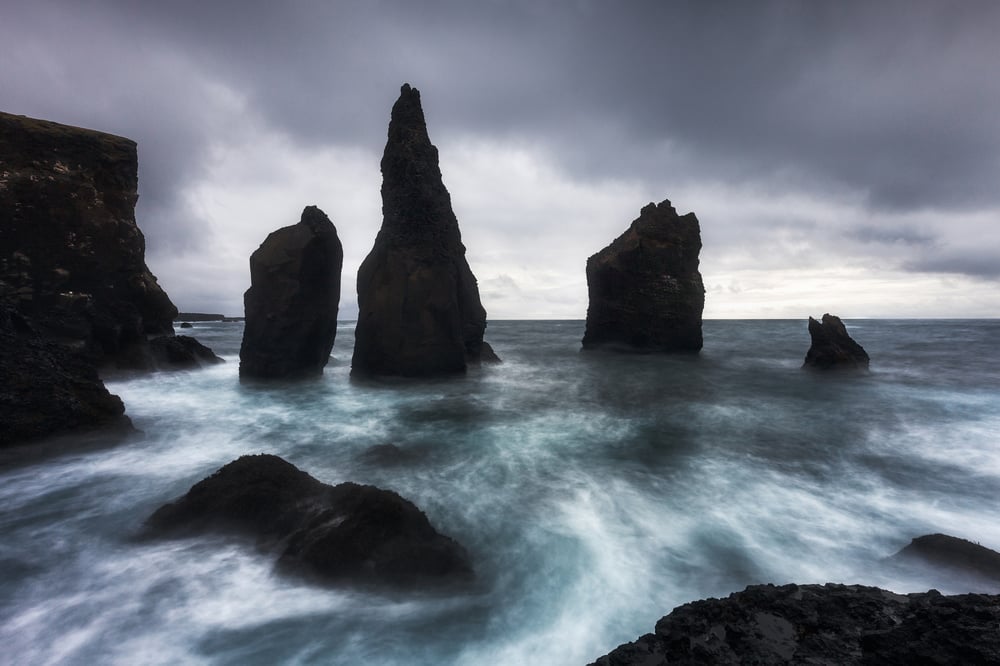
2. The Golden Circle: Iceland's Must-See Photography Highlights
Nothing says "first time in Iceland" like a drive around the Golden Circle. This iconic route, located east of the capital Reykjavik, features three major Iceland attractions: Þingvellir National Park, Geysir with the blasting geyser Strokkur, and Gullfoss, the Golden Waterfall. The Golden Circle can easily be completed in a day, with plenty of side stops like restaurants, museums, and local shops.
Þingvellir National Park
Þingvellir National Park is a historic site where the Vikings convened to make political decisions. Besides its political history, it is renowned as one of the best places to witness the splitting of the North American and Eurasian continental plates. You can walk among the gorges and ravines formed by this separation. The area is stunning during autumn when the leaves on the bushes turn vibrant colors. For a photographer, be sure to also visit the beautiful waterfall Öxarárfoss.
- Getting There: From Reykjavik, drive north via the A1 and turn right onto Road 36, which leads directly to the Þingvellir National Park Visitor Center.
- Best Time for Photography: Late September and early October for autumn colors.
- Essential Gear: Standard and telephoto lenses for the area; a wide-angle lens, tripod, and ND-filters for Öxarárfoss.
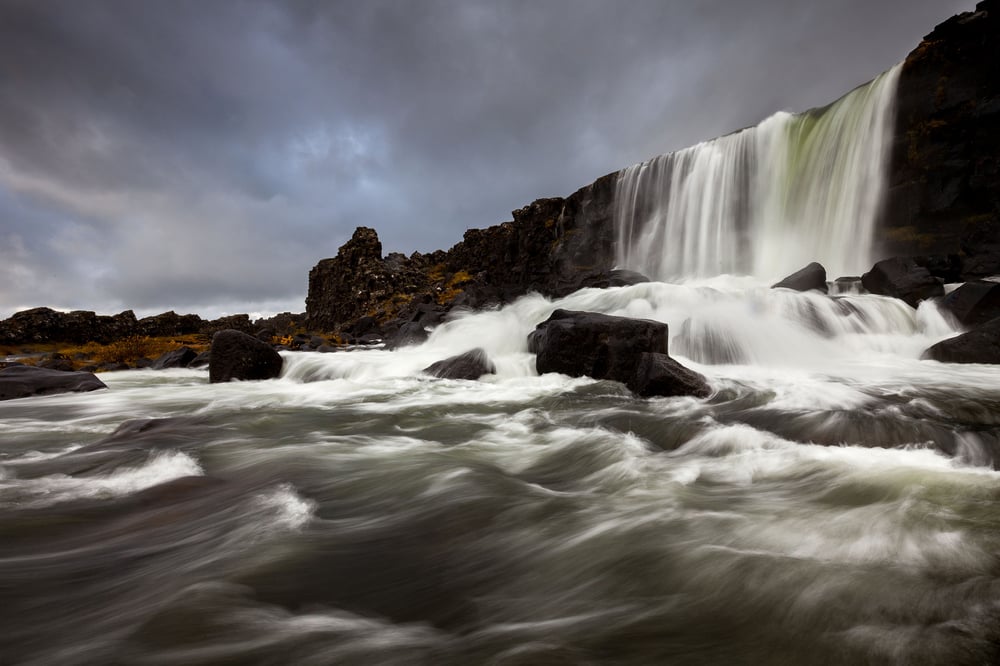
Geysir Geothermal Area
Continuing east, the Geysir area is arguably the single most iconic location in Iceland—and yes, the word "geyser" comes from this very place. While several geysers used to be active, only Strokkur erupts reliably now, blasting water 15-20 meters high approximately every seven minutes. To beat the crowds, visit during the early or late hours. In the summer, you can visit during the "night" when it's still bright, making it much easier to photograph without people in your shot.
- Getting There: From Þingvellir, follow roads 36, 365, and 37 (which becomes 35). The drive is about 60 kilometers.
- Best Time for Photography: Summer "nights" and golden hour in the winter months.
- Essential Gear: Wide-angle lens.
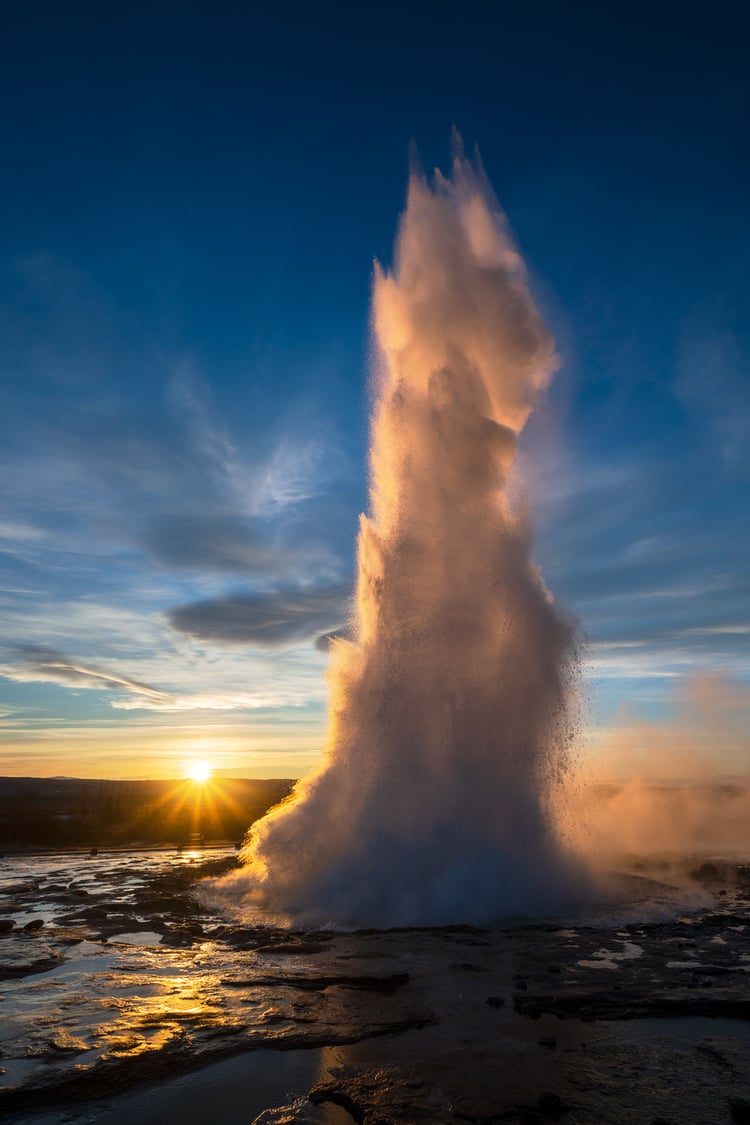
Gullfoss (The Golden Waterfall)
Just 10 kilometers up Road 35, you’ll reach the majestic Gullfoss (the Golden Waterfall), one of Iceland’s most famous natural attractions and the namesake of the route. There is a large visitor center here. Note that you can only observe and photograph Gullfoss from the western side. There are many viewing platforms to capture this monstrous, roaring waterfall. Similar to Geysir, you can often have the location almost entirely to yourself during summer nights. Be aware that some trails may close in winter due to ice.
- Best Time for Photography: Summer "nights" and golden hour in the winter months.
- Essential Gear: Wide-angle and standard lenses, tripod, and ND-filters.
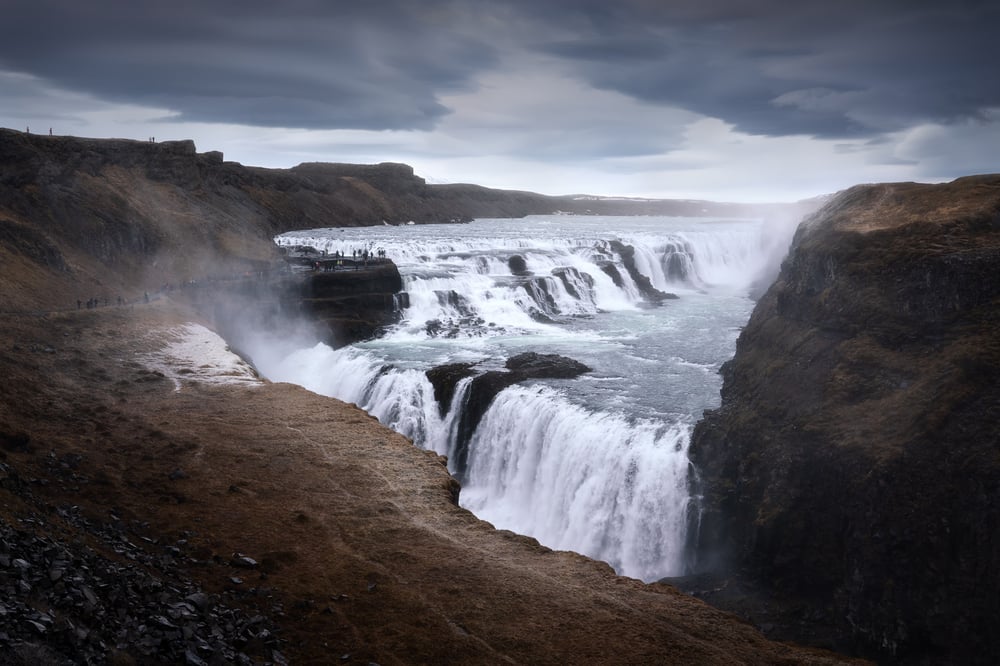
3. Seljalandsfoss: Go Behind the Water
Driving southeast along the Ring Road (A1) from Reykjavik for a couple of hours brings you to Seljalandsfoss waterfall. This famous, well-visited waterfall is unique because you can walk behind it (weather permitting—it may close due to ice in winter). Seljalandsfoss is at its best during the summer months when the setting sun lights up the cascading water, allowing you to photograph the sunset framed through the falling sheet.
Bonus Tip: A short distance north of Seljalandsfoss is Gljúfrabúi, a smaller waterfall hidden inside a cave. Be prepared for wet shoes if you venture in! During high season, you may have to wait in line.
- Best Time for Photography: Sunset during the summer months.
- Essential Gear: Wide-angle lens (to include the cave walls), tripod, and ND-filters (for long exposures).
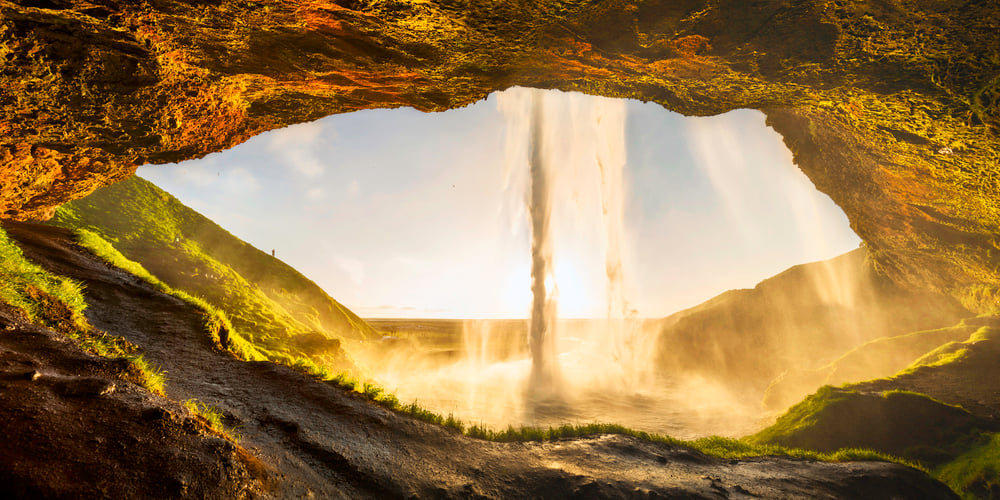
Need More Iceland Photography Locations?
If you plan on going to Iceland yourself, you can save hours upon hours researching what natural wonders you want to visit by getting my digital landscape photography map of Iceland! I have pinned more than 125 beautiful locations to photograph in Iceland + suggestions for budget accommodation. The map is easy to integrate with Google Maps so you always have it available on your phone.
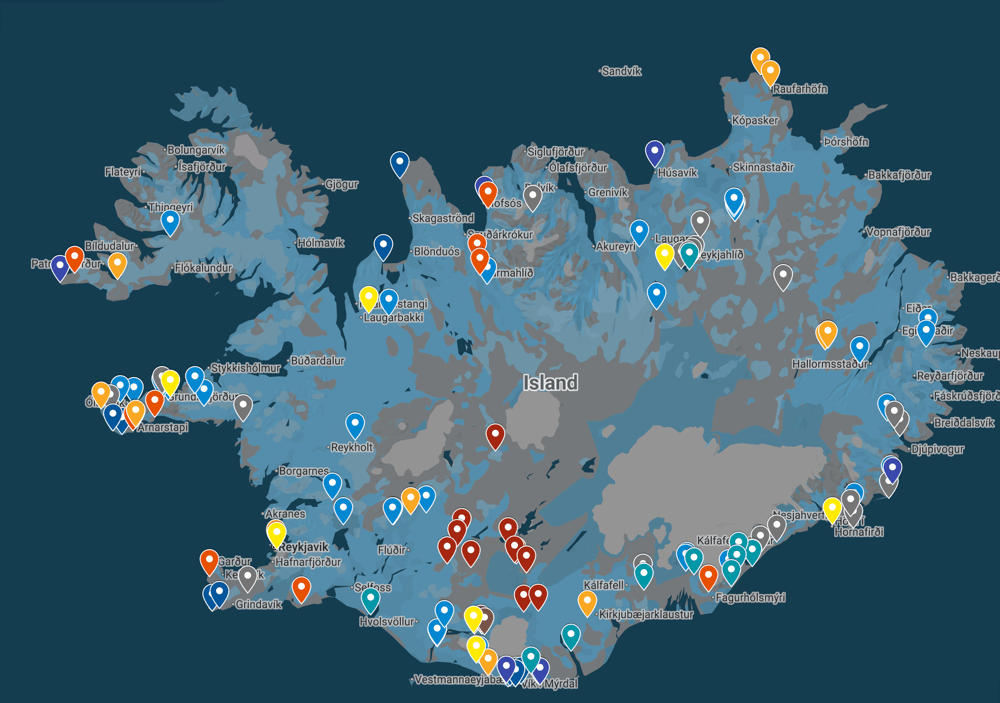
4. Skógafoss: The Aesthetic Rectangular Waterfall
Continuing along the Ring Road (A1), you'll reach the most iconic and largest waterfall of the south coast: Skógafoss. Its striking rectangular shape makes it one of the most aesthetic waterfalls in all of Iceland. The area offers ample parking, restaurants, and accommodation. A staircase from the bottom leads to the top, offering a beautiful panoramic view. If you enjoy hiking, continue further north to see at least ten more cascades over a short two-kilometer stretch.
Photography Tip: Around midday, from the right angle in the winter months, you can often capture a rainbow in front of Skógafoss. The waterfall looks its best around sunset during winter when the low sun casts deep orange and red hues. Also, don't skip it on a windy day, as the wind can blow the water around in spectacular shapes.
- Best Time for Photography: From midday to sunset during the winter months.
- Essential Gear: Wide-angle and standard lens, tripod, and ND-filters.
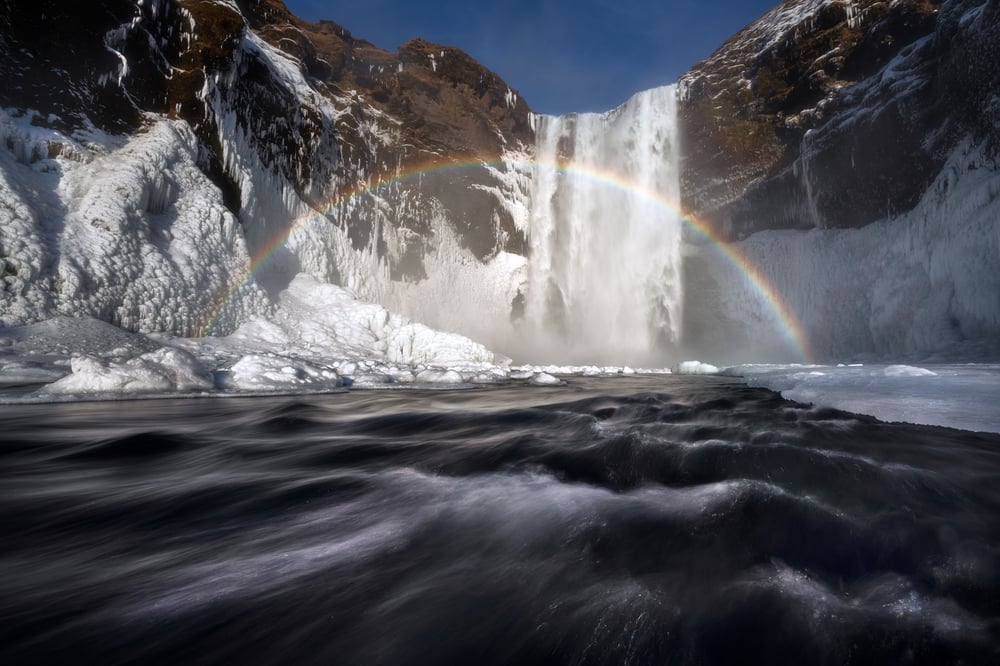
5. Dyrhólaey: Puffins and the Giant Sea Arch
Dyrhólaey is a small promontory found by driving southeast from Skógar and turning off the A1 onto Road 218. It features two plateaus: a lower one and a higher one.
- Lower Plateau: Offers a beautiful view east along the black sand beach Reynisfjara, with the iconic sea stacks Reynisdrangar in the background. You'll also find a small basalt arch here.
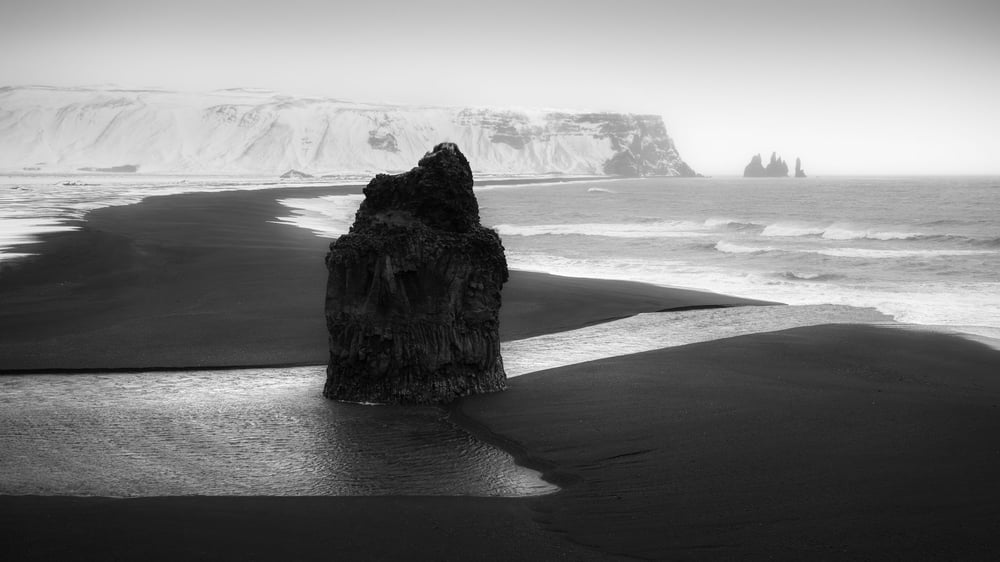
- Upper Plateau: Next to the orange lighthouse, you can see the enormous natural cliff arch itself, and to the west, an endless view of the black beach.
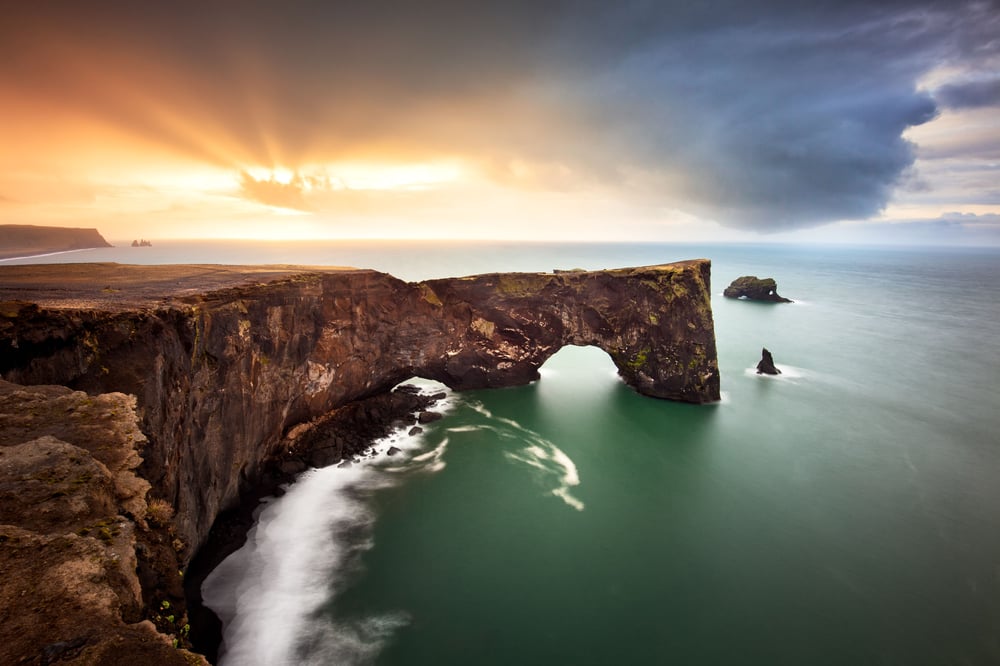
Wildlife Bonus: During summer and until about the first week of August, Dyrhólaey is one of the best places in Iceland to observe puffins. It is crucial to keep your distance (stay on the marked trails) to avoid disturbing the birds.
- Best Time for Photography: Sunrise during the winter months. For puffins, visit during June, July, and early August.
- Essential Gear: Wide-angle and standard lens, tripod, ND-filters, and a telephoto lens for puffins.
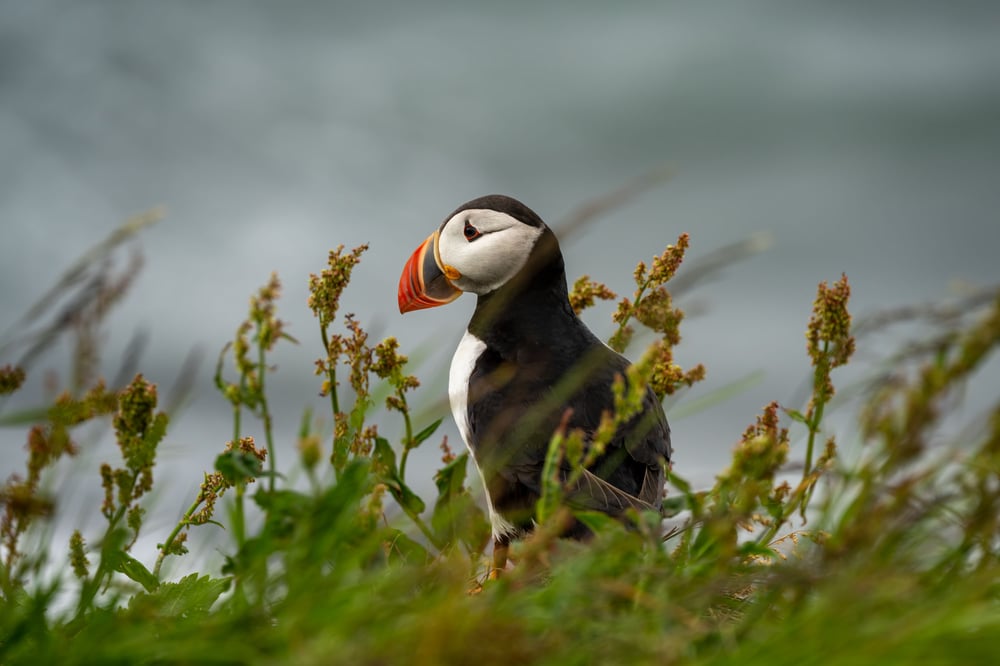
6. Vík, Reynisfjara, and Reynisdrangar: The Deadly Black Sand Beach
Further east from Dyrhólaey is the small town of Vík and the famous Black Sand Beach area. The area is divided by a promontory: the beach west of it is Reynisfjara, and the beach east (accessible from Vík) is Víkurfjara.
From both beaches, you can see Iceland’s most iconic sea stacks, Reynisdrangar. They look particularly stunning from Víkurfjara during a winter sunset, as the sun sets right behind them and illuminates the foreground waves.
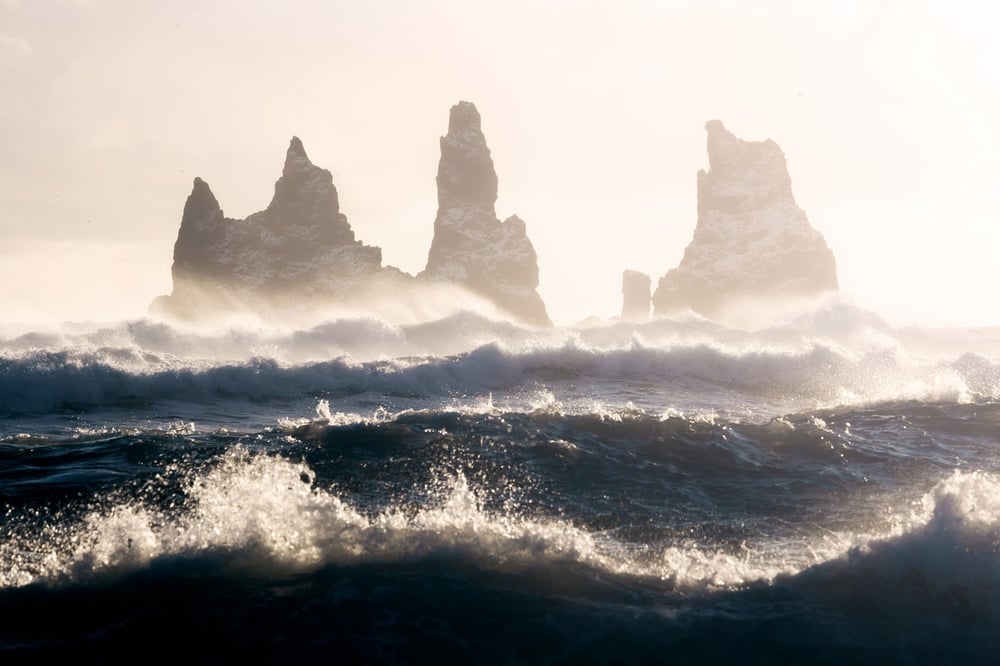
Reynisfjara features the famous basalt columns and a small basalt cave. A winter sunrise is beautiful here, but this location comes with a massive warning: it is the most deadly spot in all of Iceland!
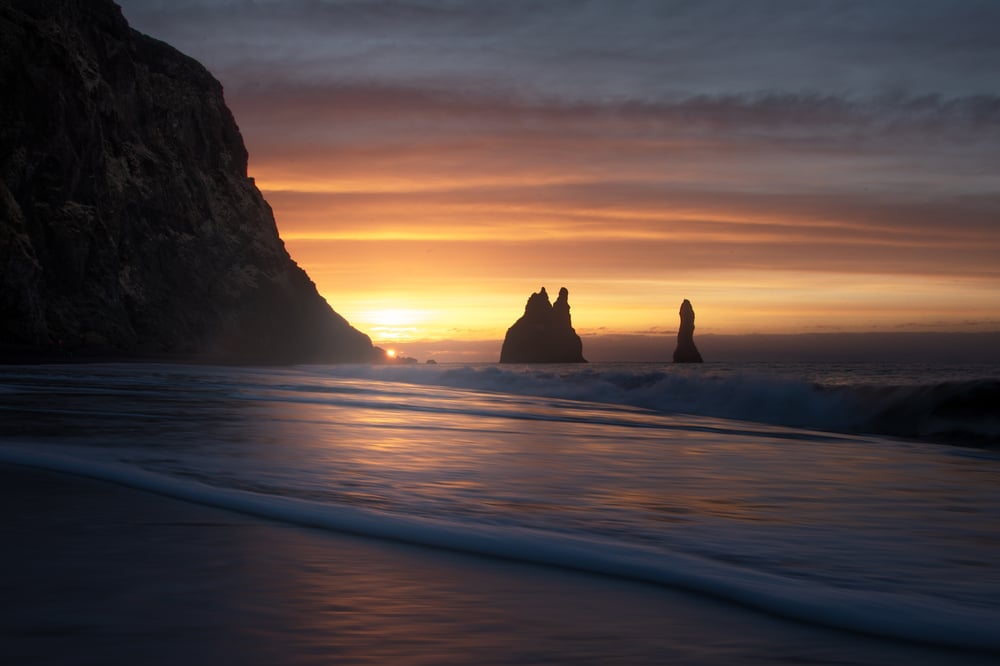
⚠️ Reynisfjara Safety Warning ⚠️
Almost every year, people lose their lives here by getting too close to the water. Sneaker waves can manifest out of nowhere, breaking tens of meters further up the beach than other waves. Being caught in one of these waves makes the chance of survival very slim.
- Always read and follow the warning signs!
- Always keep an eye on the sea, even while photographing!
- Stay far away from the water, especially on days with big waves!
- Do not place children near the sea for photos.
- Look at the sand. If there are no footprints where you are standing, a wave has just washed them away, meaning another, potentially bigger wave can hit anytime.
- Best Time for Photography: Sunrise on the western side (Reynisfjara) and sunset on the eastern side (Víkurfjara) during the winter months.
- Essential Gear: Wide-angle, standard, and telephoto lenses.
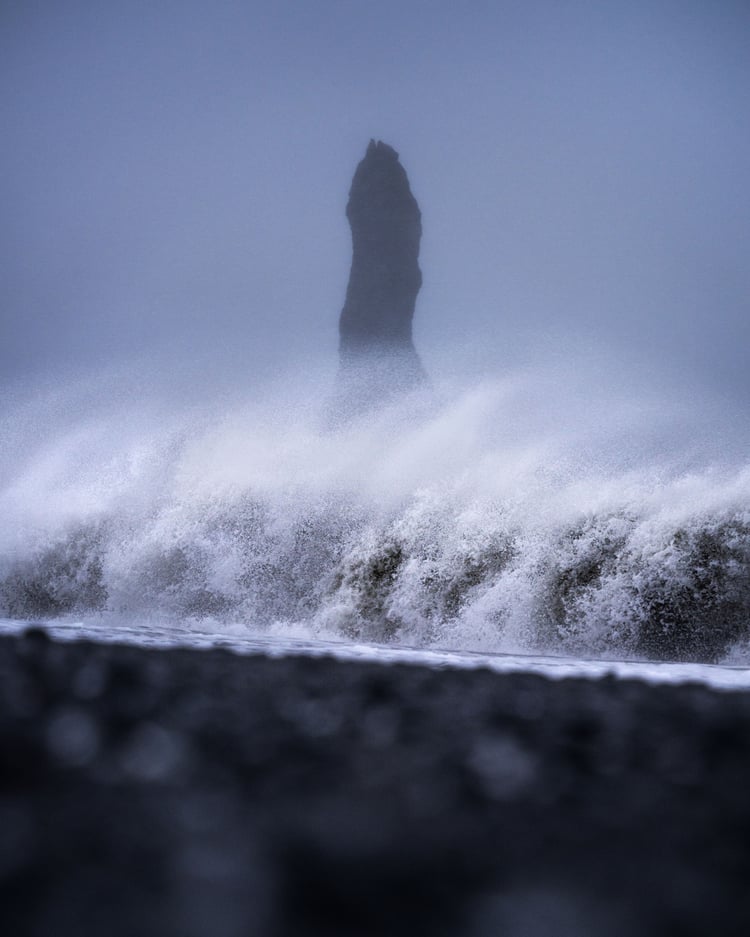
7. Jökulsárlón and the Diamond Beach: Glacial Ice and Black Sand
This absolute must-see location is all about ice! It features the famous glacier lagoon Jökulsárlón and the nearby ice beach, also known as the Diamond Beach Breiðamerkursandur.
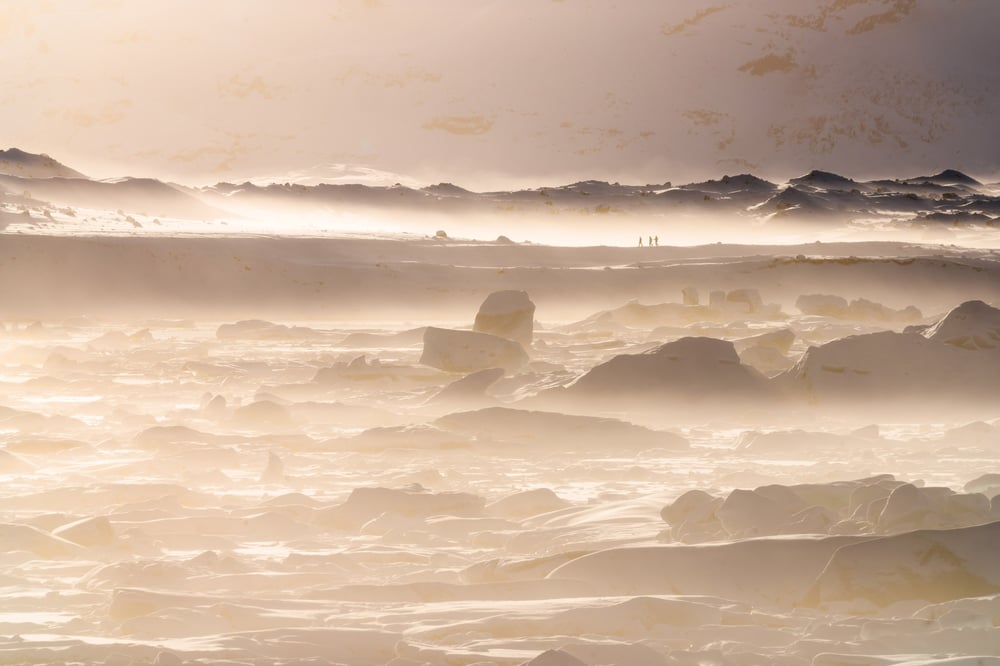
Located a couple of hours east of Vík, Jökulsárlón is where ice breaks off the Breiðamerkurjökull glacier and floats in the lagoon. Tides and wind transport the ice through a small bottleneck into the sea, where waves push the chunks back onto the black sand beach. This transparent, old glacier ice glittering on the dark sand inspired the name Diamond Beach.
These spots are a photographer's dream. At Jökulsárlón, you can capture the golden hour or Northern Lights with floating ice. At Diamond Beach, you can spend hours photographing long exposures of waves washing around the ice. During the winter golden hour, the low sun can backlight the ice, causing it to glow spectacularly.
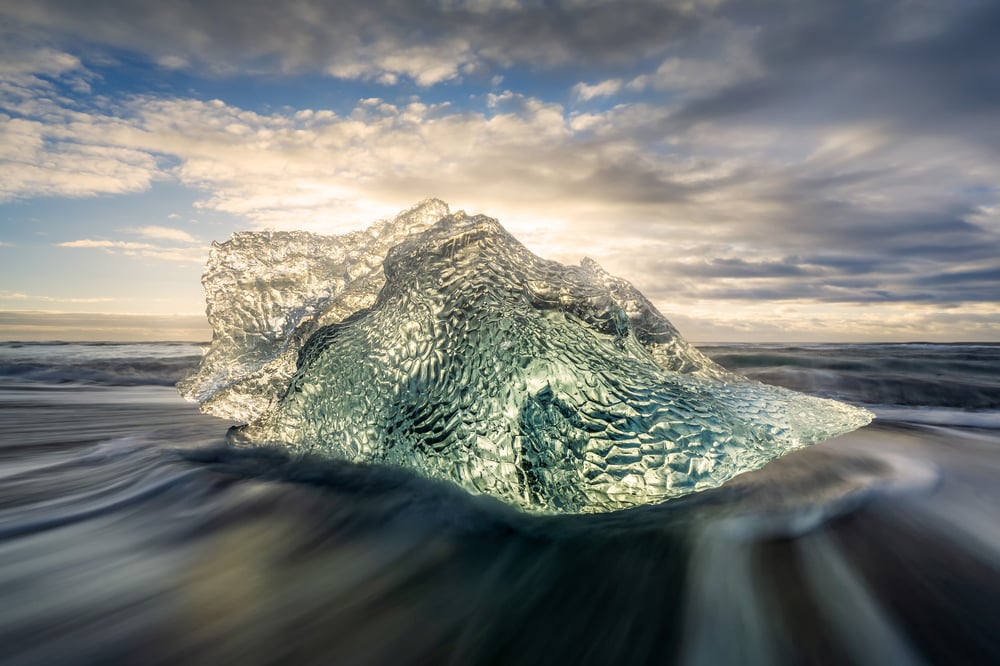
⚠️ A Word of Warning! ⚠️
While less dangerous than Reynisfjara, glacier ice is as hard as concrete. A chunk of ice caught in a wave will break your leg if it hits you. Be extremely careful not to slip on the ice scattered along the beach. The nearest hospital is hours away!
- Best Time for Photography: Golden hour all year for Jökulsárlón, and sunrise in the winter for Diamond Beach.
- Essential Gear: Wide-angle (potentially ultra-wide), standard, and telephoto lenses, tripod, and ND-filters.
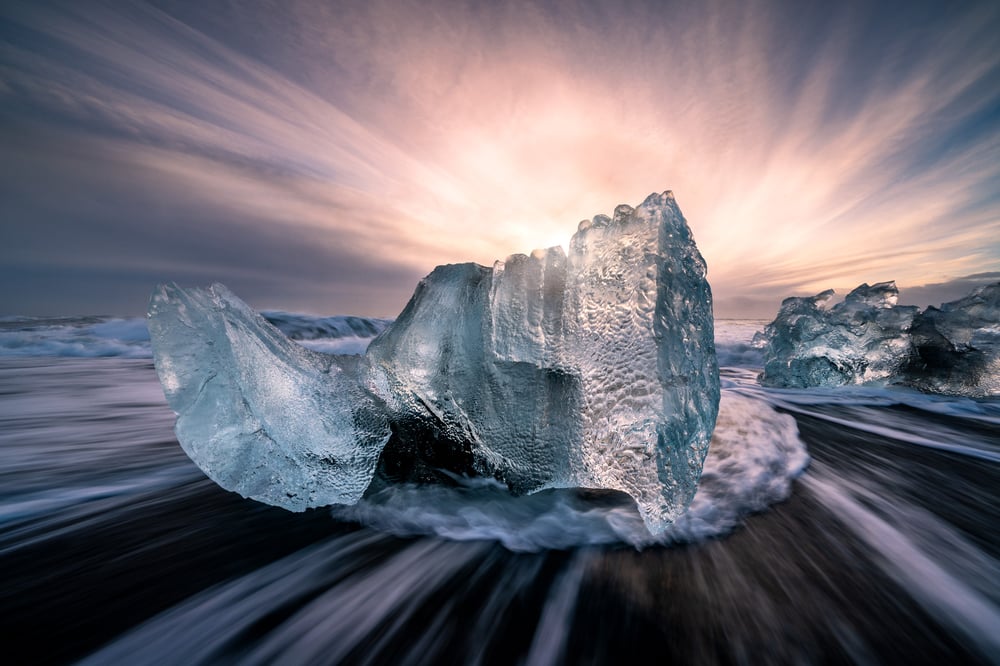
Photography Tip: Due to the high pressure glacier ice can look incredibly beautiful up close. Be sure to also photograph all the details and patterns you can find in the different chunks of ice.
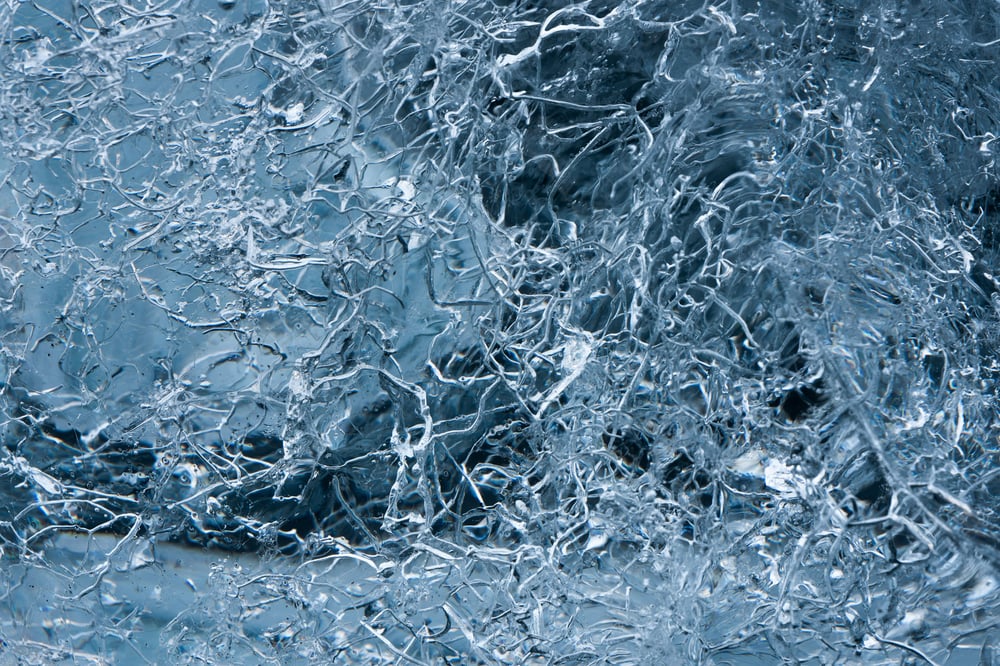
8. Stokksnes: The Iconic Reflective Twin Mountains
Driving northeast from the Jökulsárlón glacier lagoon for about an hour and 15 minutes, past the town of Höfn, you'll reach the stunning area of Stokksnes. Just drive towards Viking Cafe & Guesthouse along the gravel road directly east of Höfn.
To enter the area, you can either park at the cafe and walk in or pay a fee at the cafe to drive onto the dedicated Stokksnes parking lot. Parking there grants you the epic panoramic view of one of Iceland's most iconic locations: the Vestrahorn mountain range. Vestrahorn is the name of the mountain on the right.
From here, you can explore the black sand dunes (please be respectful of the fragile vegetation and do not walk on it) and go down to the beach where you can photograph a beautiful reflection of the mountains.
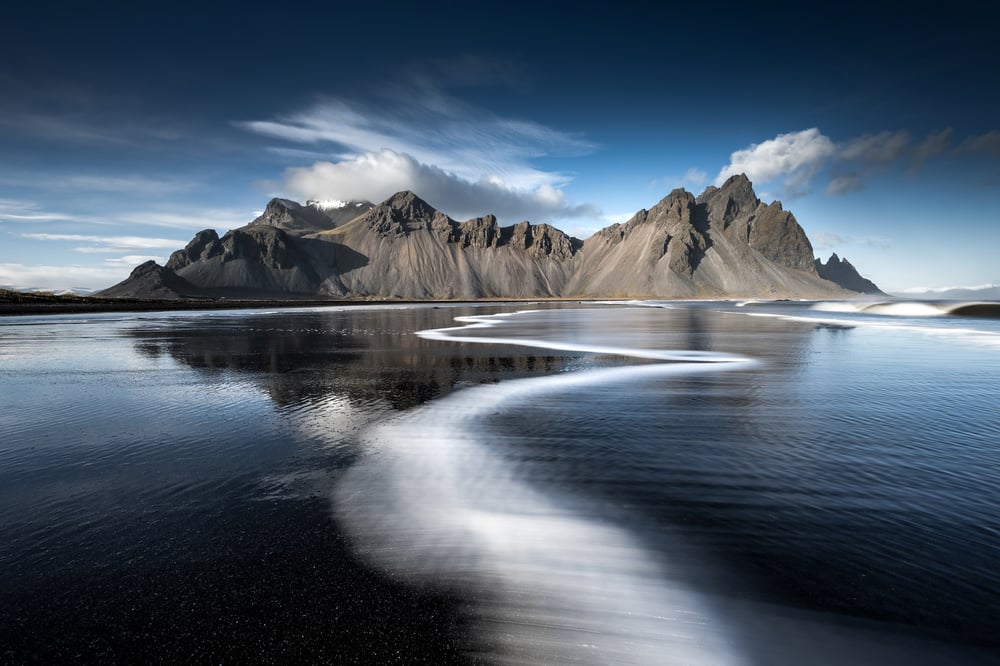
If you walk up the beach and a bit inland, you'll find an area that is usually flooded. On calm days, this shallow water can provide a second, stunning reflection of Vestrahorn. Stokksnes is a must-see natural attraction and an area full of opportunities for dramatic photographs in all sorts of weather, throughout the year.
- Best Time for Photography: Golden hour all year round.
- Essential Gear: Wide-angle and standard lens.
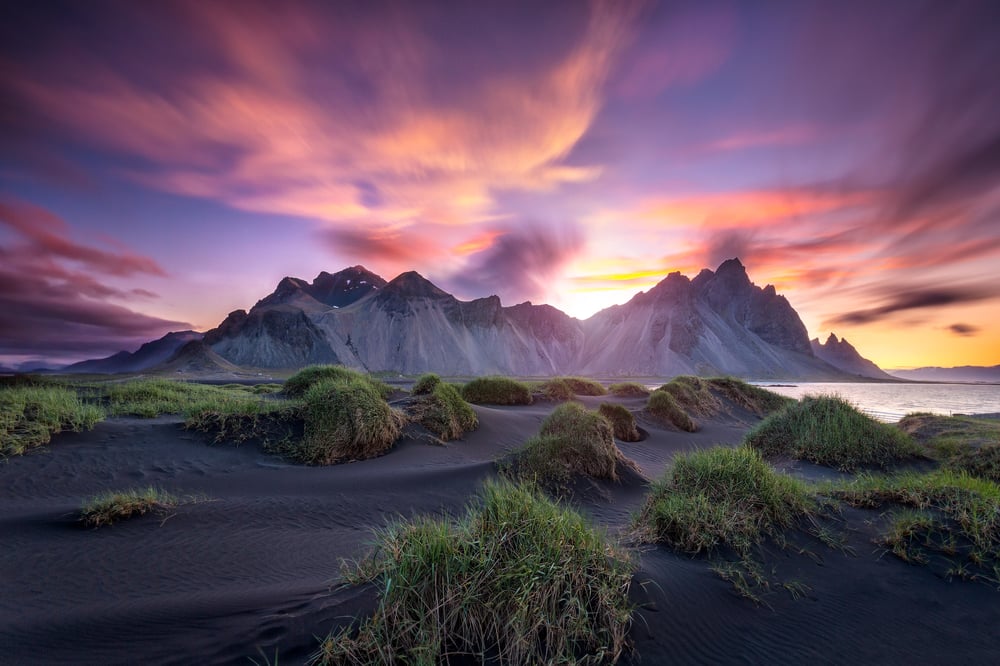
9. Kirkjufell and the Snæfellsnes Peninsula: Iceland's Most Photographed Mountain
Located north of the Reykjanes peninsula, the Snæfellsnes Peninsula is known as "Little Iceland" because it offers a glimpse of everything Iceland has to offer. If you have only a couple of days, a drive here is highly recommended. Activities include walking the Arnarstapi coastline, climbing the Saxhóll crater, and visiting Svödufoss waterfall.
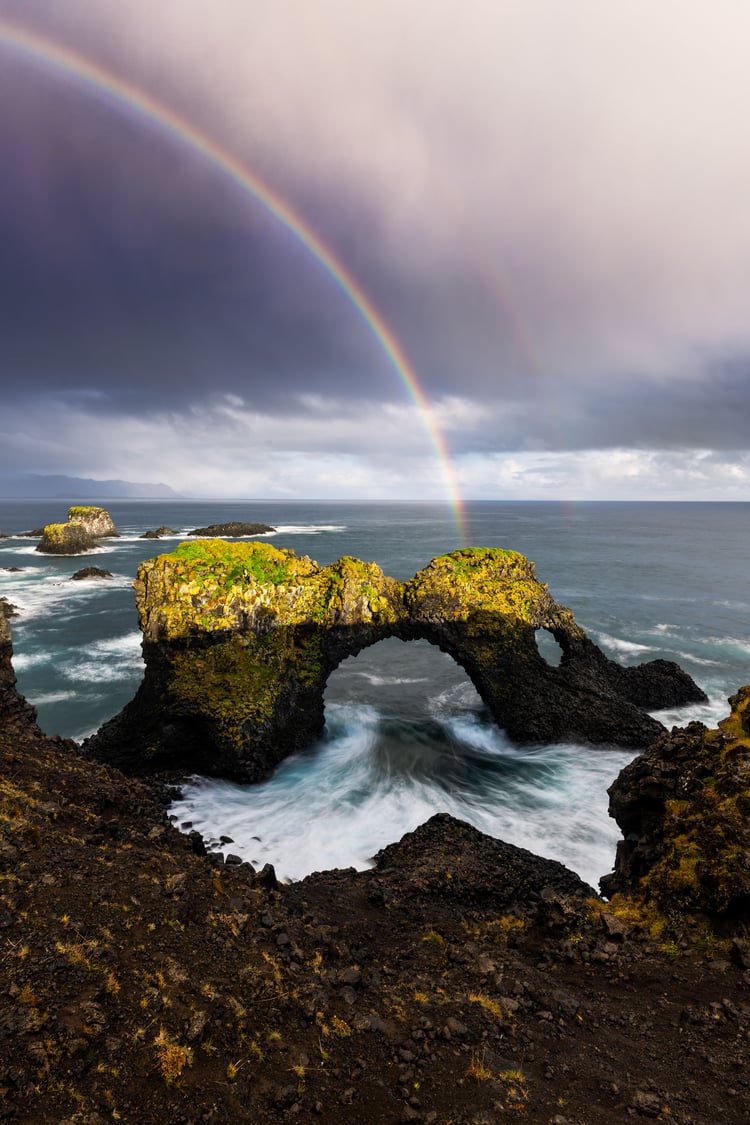
The true star is Kirkjufell, the most iconic mountain in all of Iceland, found just west of Grundarfjörður town. Kirkjufell has been featured in Hollywood productions, including The Secret Life of Walter Mitty and Game of Thrones. The most famous photography spot is from the waterfalls, Kirkjufellsfoss, right next to the parking lot.
$\text{Kirkjufell}$ looks best during the summer months when deep greens color the mountain and the sun both sets and rises behind it.
- Best Time for Photography: Golden hour during the summer months.
- Essential Gear: Wide-angle and standard lenses, tripod, and ND-filters.
Read more about the Snæfellsnes National Park by clicking here.
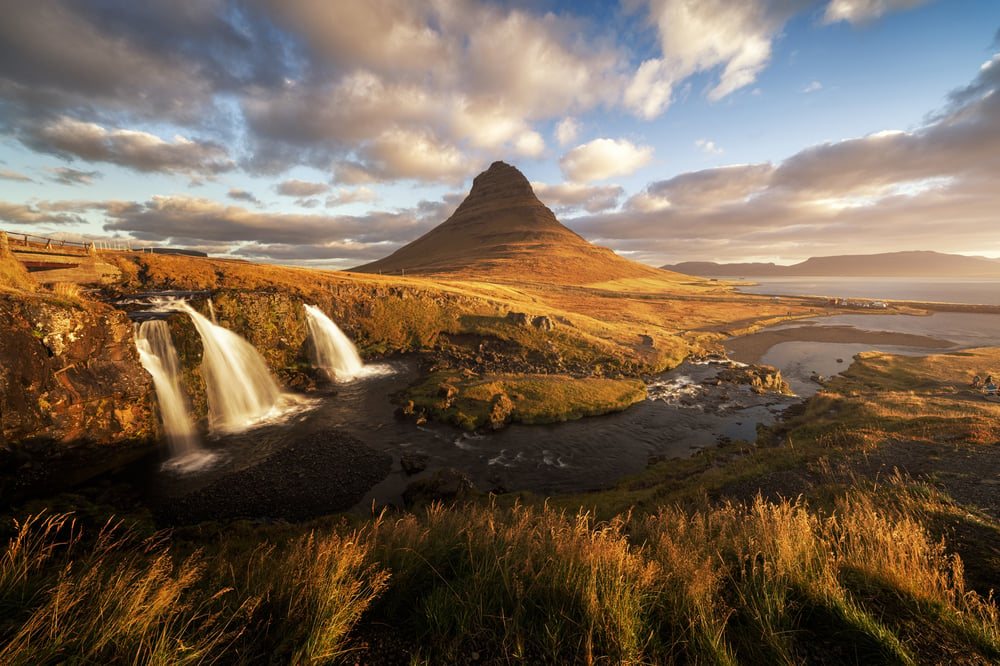
10.Goðafoss: The Waterfall of the Gods
It's nearly impossible to fit every beautiful Iceland location into a top-10 list, and among so many must-see attractions, Goðafoss cannot be ignored! According to folklore, Goðafoss (the Waterfall of the Gods) got its name when the Vikings threw their statues of the pre-Christian gods into the falls upon converting to Christianity.
Goðafoss is a large, horseshoe-shaped, and easily accessible waterfall in northern Iceland between Akureyri and Lake Myvatn. The eastern side generally offers the best view, with two vantage points above and one below the falls. You can beat the crowds in the summer by visiting late or early in the day when the low sun can cast beautiful light.
- Best Time for Photography: Summer months, but also stunning during the equinoxes and winter.
- Essential Gear: Wide-angle and standard lenses, tripod, and ND-filters.
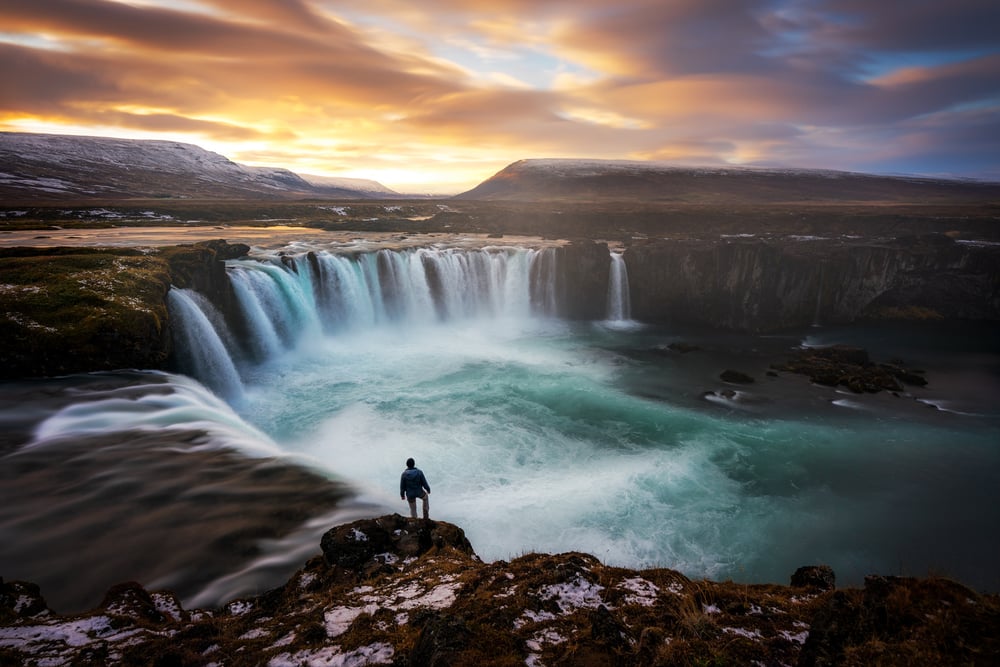
Final Tip for Your Iceland Photography Trip
If you want to save hours of research on where and what natural wonders to visit, be sure to get my digital landscape photography map of Iceland right here! I've pinned over 125 beautiful photography locations, including suggestions for budget accommodation. Each pin has a video link or a small description with essential information. The map is easy to integrate with Google Maps, so you always have it available on your phone.
And if you haven't had enough, be sure to watch my Iceland Travel and Photography Guide on YouTube:

